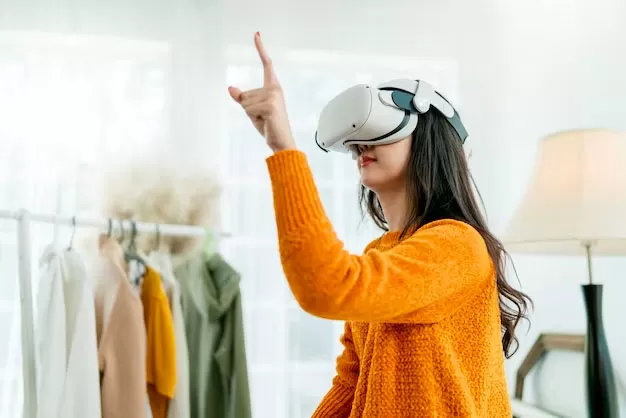As technology continues to evolve, the retail industry is undergoing significant transformations. One of the most exciting developments in recent years is the rise of virtual reality (VR) shopping, which promises to revolutionize the way consumers interact with products and retailers. In this article, we explore the various aspects of VR shopping and take a glimpse into the future of this immersive shopping experience.
One of the most exciting developments in recent years is the rise of virtual reality (VR) shopping, which promises to revolutionize the way consumers interact with products and retailers.
What is Virtual Reality Shopping?
Virtual reality shopping refers to the use of VR technology to create immersive, interactive shopping experiences that closely mimic the real world. Using VR headsets, customers can explore virtual stores, interact with products, and make purchases, all from the comfort of their homes.
Using VR headsets, customers can explore virtual stores, interact with products, and make purchases, all from the comfort of their homes.
Benefits of VR Shopping:
- Enhanced Customer Engagement: VR shopping offers a unique, engaging experience that keeps customers interested and entertained, leading to increased brand loyalty and sales.
- Personalized Shopping: VR technology can collect data on customer preferences and habits, allowing retailers to create tailored shopping experiences that cater to individual tastes.
VR shopping offers a unique, engaging experience that keeps customers interested and entertained, leading to increased brand loyalty and sales.
Examples of VR Shopping in Action:
- IKEA’s Virtual Reality Showroom: IKEA has developed a VR application that allows customers to virtually explore a fully furnished home, test out furniture, and visualize how it would look in their own space.
- Alibaba’s Buy+ Virtual Mall: Alibaba has introduced a VR shopping experience that enables customers to explore a virtual mall, interact with products, and make purchases using their smartphone and a VR headset.
IKEA has developed a VR application that allows customers to virtually explore a fully furnished home, test out furniture, and visualize how it would look in their own space.
The Future of VR Shopping:
As VR technology becomes more accessible and affordable, we can expect to see a greater adoption of VR shopping by retailers and consumers alike. This will lead to an increased focus on creating unique, immersive shopping experiences that blend the best of online and in-store retail.
As VR technology becomes more accessible and affordable, we can expect to see a greater adoption of VR shopping by retailers and consumers alike.
Conclusion:
The rise of virtual reality shopping offers a glimpse into a future where shopping is more immersive, personalized, and engaging than ever before. As retailers continue to experiment with and embrace VR technology, the boundaries between physical and digital retail will blur, leading to exciting new possibilities for the industry. To learn more about other technologies that are transforming the retail landscape, check out our previous article on The Future of Shopping: How Technology is Transforming Retail.
The rise of virtual reality shopping offers a glimpse into a future where shopping is more immersive, personalized, and engaging than ever before.
